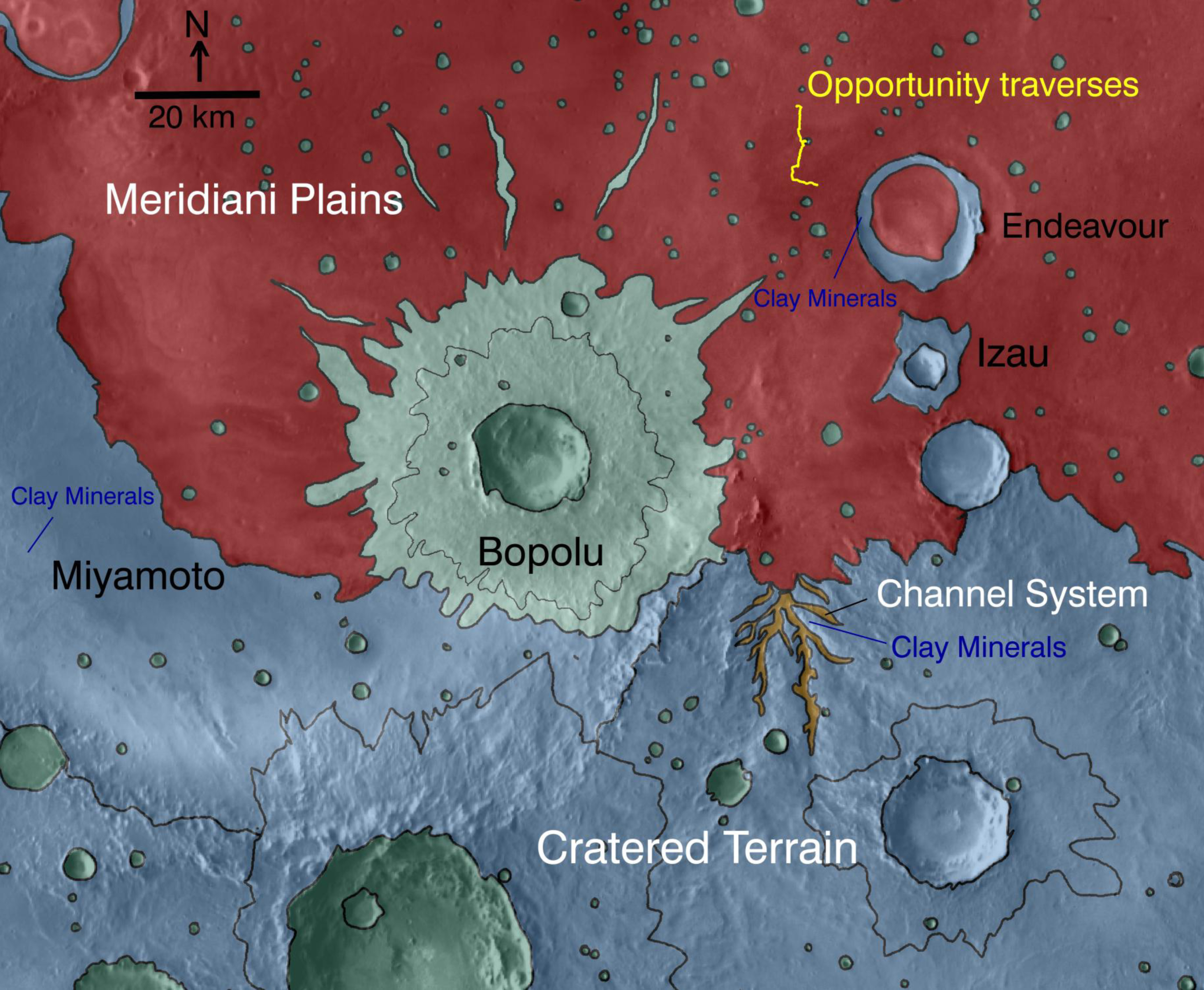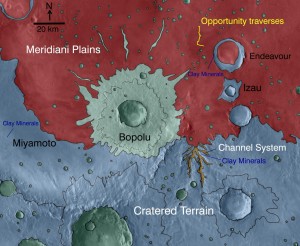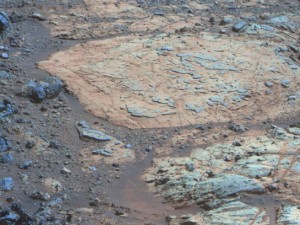January 24, 2014 – I don’t know about you but I am fascinated by what we are learning about Mars from the orbiters and rovers we have sent there. Curiosity is teaching us a lot but so is Opportunity as it continues to provide us with data from those instruments still functioning after a decade on the surface.
In the latest findings reported in an article entitled, Ancient Aqueous Environments at Endeavour Crater, Mars, appearing in the journal Science, we read about a Mars whose geochemistry indicates extensive surface freshwater some 3.8 billion years ago. In the area known as the Meridiani Plains, Opportunity‘s investigations indicate the existence of extensive freshwater rivers and streams suitable to microbial life here on Earth. That doesn’t mean Mars supported microbial life at the time but the conditions were certainly hospitable in this region of the planet seen in the map below. The history also shows that an asteroid impact ended this Eden, subjecting the area to a rain of destruction that turned the freshwater as acidic as vinegar.
The scientists can discern this by studying the different minerals that formed in the sediments of these freshwater streams and rivers. Analysis of the minerals in a geological feature called the Matijevic formation, rich in clay minerals, shows that these mudstone deposits were laid down by water formed in life-favorable conditions. Above the Matijevic formation a younger deposit indicates much harsher conditions with mineral deposits showing evidence of highly-acidic water.
Meanwhile Opportunity has just survived another Martian winter and compliments of a wind storm had a solar panel cleaning to give it a fresh start for its 11th year on the surface of the planet.
Seen below are the mudstone deposits discovered by Opportunity on the rim of Endeavour Crater.
The Opportunity discovery follows on similar discoveries by Curiosity at Gale Crater where the latter has detected evidence of freshwater rivers and lakes in Mars’ geological record. Back in December of 2013 a paper published in Science Magazine described rock samples that were evidence of a freshwater lake in the vicinity of Yellowknife Bay. The mineral deposits, like the ones found by Opportunity indicate water with a neutral pH, very suitable for life. The size of this ancient lake – approximately 50 kilometers (31 miles) long and 5 kilometers (3 miles) in width. The scientists who reported the evidence state that any microbes from Earth could easily have survived in this ancient body of water which appears to have endured for at least 100,000 years.
What we can conclude from both rovers is that Mars in its ancient past was far more Earthlike and in these conditions which lasted several hundred million years was highly suitable for the emergence of life. Although no past life has been detected (neither rover was designed to search for fossil evidence), the future rover that NASA plans for 2020 may include instrumentation capable of finding that evidence. What would be great is if we could bring back those experiments first done on the Viking landers and repeat them with the future rover. Then we could determine if life not only existed in the past but continues to thrive in the present.













[…] Exploring Mars Habitability – Opportunity Updates Our Understanding of Our Planetary Neighbour https://www.21stcentech.com/exploring-mars-habitability-oppor.….neighbour/ […]